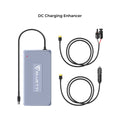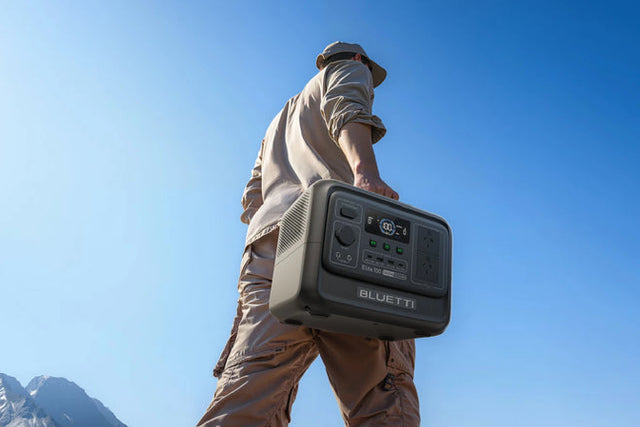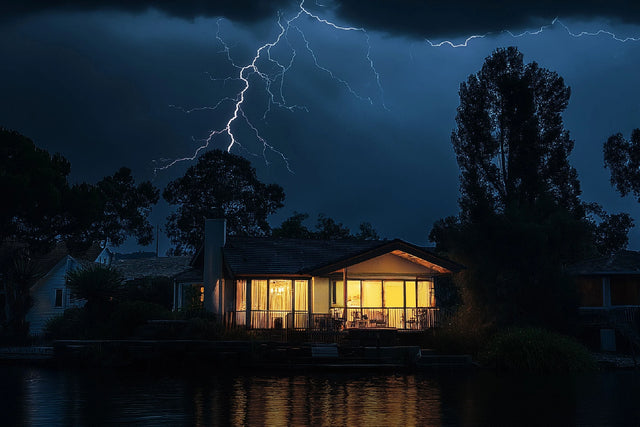As the demand for sustainable energy solutions continues to rise, more and more homeowners in Australia are turning to DIY home battery backups as a way to reduce their reliance on the grid and save on energy costs. But with so many options and factors to consider, it can be overwhelming and confusing to know where to start. That's why we've created this ultimate guide to walk you through the step-by-step process of creating a DIY home battery backup in Australia. Whether you're a beginner or have some DIY experience, this comprehensive guide will provide you with the necessary knowledge and tools to successfully build your own home battery backup system and take control of your energy usage. Let's dive in and discover the benefits and importance of having a DIY home battery backup in Australia.
I.Advantages of DIY Home Battery Backup
In recent years, there has been a growing interest in home battery backup systems in Australia. With the increasing frequency of power outages due to extreme weather events and the rising cost of electricity, many homeowners are looking for alternative solutions to ensure a reliable and affordable energy supply for their households. One of the most popular options is the DIY home battery backup system, which allows homeowners to have more control over their energy usage and costs. In this article, we will provide a comprehensive guide for creating a step by step DIY home battery backup system in Australia, covering everything from the basics of home battery backup systems to the advantages of choosing the DIY approach.
A. Explanation of Home Battery Backup Systems
Home battery backup systems, also known as energy storage systems, are devices that store excess energy generated by solar panels or other renewable energy sources. This stored energy can then be used during peak demand periods or in the event of a power outage. These systems typically consist of a battery, inverter, and monitoring system to manage the flow of energy. They can be connected to the main grid, allowing homeowners to sell excess energy back to the grid, or operate independently as a standalone system.
The most common types of batteries used in home battery backup systems in Australia are lithium-ion and lead-acid batteries. Lithium-ion batteries are more expensive but have a longer lifespan and higher energy density, while lead-acid batteries are more affordable but have a shorter lifespan and lower energy density. Depending on the size of your household and energy needs, you can choose the type of battery that best suits your budget and requirements.
B. Advantages of DIY Home Battery Backup in Australia
There are several advantages to choosing the DIY approach for your home battery backup system in Australia. First and foremost, it allows for more control and customization of the system to suit your energy needs and budget. DIY systems also tend to be more affordable compared to pre-made systems, as they do not include installation costs or markups from retailers. Additionally, creating a DIY home battery backup system can be a fun and rewarding project for those who enjoy DIY projects.
Moreover, in Australia, the government offers incentives for homeowners who install battery storage systems. By going the DIY route, homeowners can save even more money by qualifying for these incentives, which can significantly reduce the overall cost of the system. Furthermore, DIY systems are typically easier to maintain and repair, as all the components can be easily accessed and replaced.
creating a step by step DIY home battery backup system in Australia can be a cost-effective and practical solution for homeowners looking to have more control over their energy usage and costs. With the right knowledge and materials, this project can be easily achieved and provide a reliable and sustainable energy supply for your household. In the following sections, we will dive into the steps and materials needed to create your own DIY home battery backup system in Australia.

A home battery backup system is an essential component for any household in Australia. With the increasing frequency of natural disasters and power outages, having a reliable backup system can provide peace of mind and ensure that your home stays powered during emergencies. Creating a DIY home battery backup system may seem like a daunting task, but with the right knowledge and resources, it can be a manageable project.
II. Understanding the Basics of a Home Battery Backup System
Before diving into the steps of creating a DIY home battery backup system, it is important to have a basic understanding of the components involved.
A. Types of BatteriesThe first step in creating a home battery backup system is to choose the right type of battery for your needs. There are two main types of batteries commonly used in home backup systems:
- Lead-Acid Batteries: These are the most affordable and widely used batteries in home backup systems. They have a moderate lifespan and can withstand high charging and discharging rates. However, they require regular maintenance and have lower energy density compared to other types of batteries.
- Lithium-ion Batteries: These are a newer and more advanced type of battery that offers higher energy density, longer lifespan, and minimal maintenance. However, they are more expensive than lead-acid batteries.
B. Capacity and Voltage of Batteries
The capacity and voltage of the batteries are crucial factors to consider when creating a home battery backup system. The capacity refers to the amount of energy that a battery can store, while voltage refers to the amount of electrical pressure that the battery can handle.
There are a few things to keep in mind when calculating your home's energy needs:
- How to Calculate Your Home's Energy Needs: To determine the capacity of the battery you will need, you must first calculate your home's daily energy consumption. This includes the energy used by appliances and devices, lighting, and other electrical needs. Once you have this number, you can calculate the battery capacity needed to power your home during a blackout.
- Choosing the Right Battery Capacity: It is recommended to have enough battery capacity to power your home for at least 24 hours. It is also advised to leave some extra capacity for unforeseen circumstances.
- Understanding Battery Voltage: The voltage of the battery should match the voltage of your home's electrical system. Most homes in Australia have a single-phase 240V system, so you will need a battery with a voltage of 12V, 24V, or 48V.
C. Other Components of a Home Battery Backup System
In addition to the batteries, there are other essential components that make up a home battery backup system. These include:
- Charge Controller: This component regulates the charging and discharging of the battery to prevent overcharging and damage. It also helps to maximize the battery's lifespan.
- Inverter: The inverter converts the DC energy stored in the battery to AC energy, which is used to power household appliances.
- Cables and Connections: The cables and connections are responsible for linking all the components of the system together. It is important to use high-quality and appropriate cables to ensure safety and efficiency.
Understanding the basics of a home battery backup system is crucial in creating a successful DIY project. With this knowledge, you can move on to the next step of choosing the right components and assembling them together to create a reliable backup system for your home in Australia.

III. Steps to Creating a DIY Home Battery Backup System in Australia
Creating a DIY home battery backup system in Australia may seem like a daunting task, but with the right steps and guidance, it can be accomplished successfully. In this section, we will discuss the step-by-step process of creating a DIY home battery backup system in Australia.
A. Step 1: Assess Your Energy Needs
The first step in creating a home battery backup system is to assess your energy needs. This will help you determine the size and capacity of the battery system you will require. Here are two important factors to consider when assessing your energy needs:
- Determine Your Average Daily Energy Consumption: To determine your average daily energy consumption, you will need to look at your energy bills over the past few months. This will give you an idea of how much energy your household uses on a daily basis.
- Identify Peak Energy Usage: It is also important to identify the peak energy usage in your household. This is the time of day when you use the most energy, and it will help determine the size and capacity of your battery backup system.
B. Step 2: Choose Your Battery Type and Capacity
Once you have assessed your energy needs, the next step is to choose the type and capacity of your batteries. The two most common types of home battery systems are lead-acid and lithium-ion batteries. Here are some pros and cons of each type:
- Lead-Acid Batteries: Lead-acid batteries are the most affordable option, but they have a shorter lifespan compared to lithium-ion batteries. They are also bulkier and require regular maintenance.
- Lithium-ion Batteries: Lithium-ion batteries have a longer lifespan and are more compact. They also require less maintenance. However, they are more expensive than lead-acid batteries.
Once you have chosen the type of battery, you will need to calculate the required battery capacity. This can be done by dividing your average daily energy consumption by the average depth of discharge for the chosen battery type.
C. Step 3: Select the Right Inverter and Charge Controller
The inverter and charge controller are crucial components of a home battery backup system. The inverter converts the direct current (DC) from the battery into alternating current (AC) for use in your household. The charge controller regulates the flow of energy to and from the battery. It is important to choose high-quality and compatible inverter and charge controller for your battery system.
D. Step 4: Gathering the Necessary Materials and Tools
Before starting the installation process, make sure you have all the necessary materials and tools. This may include batteries, cables, connectors, fuses, and a battery box. You will also need basic tools like a drill, screwdriver, and wire cutters.
E. Step 5: Installation Process
Now that you have all the necessary materials and tools, it's time to start the installation process. Here are the steps involved:
- Mounting the Batteries: The first step is to mount the batteries in a safe and ventilated area. Make sure to follow the manufacturer's instructions for proper installation.
- Connecting the Cables: Next, you will need to connect the positive and negative cables from the battery to the inverter and charge controller.
- Installing the Inverter and Charge Controller: Once the cables are connected, you can install the inverter and charge controller in a safe and accessible location.
F. Step 6: Testing and Maintenance
After the installation, it is important to test the functionality of your home battery backup system. You can do this by turning off the main power supply and using the backup system to power your household appliances. It is also important to regularly maintain your battery system to ensure its longevity and efficiency.
creating a step-by-step DIY home battery backup system in Australia may seem like a challenging task, but with careful planning and implementation, it can save you money and provide peace of mind during power outages. Remember to do thorough research and follow safety precautions during the installation process.
IV. Important Considerations and Tips for DIY Home Battery Backup Systems in Australia
When it comes to creating a DIY home battery backup system in Australia, there are a few important considerations and tips that you should keep in mind. These factors can help ensure the safety, efficiency, and longevity of your battery backup system.
A. Safety Precautions
As with any DIY project, safety should always be a top priority. When working with batteries and electrical connections, it is important to take proper precautions to avoid accidents or injuries. This includes wearing protective gear, such as gloves and safety glasses, and following all safety instructions provided by the battery manufacturer.
In addition, it is important to make sure that the battery backup system is installed in a well-ventilated area to prevent the build-up of potentially harmful gases. It is also recommended to have a fire extinguisher nearby in case of any emergencies.
B. Government Regulations and Incentives
Before embarking on your DIY home battery backup project, it is important to be aware of any government regulations and incentives that may apply. In Australia, some states offer incentives or rebates for installing a solar storage battery, so it is worth checking with your local government to see if you are eligible for any financial assistance.
In addition, it is important to comply with all relevant regulations and standards when installing your battery backup system. This not only ensures the safety of your home and family, but it can also prevent any potential legal issues in the future.
C. Maintenance Tips for Optimal Battery Performance
If you want your battery backup system to operate efficiently and effectively, proper maintenance is key. Here are a few tips to help you maintain your system for optimal performance:
1. Regular Inspections: It is important to regularly inspect your battery backup system for any visible damage or signs of wear and tear. This can help identify any potential issues before they become major problems.
2. Cleaning: Over time, dust, dirt, and debris can accumulate on the battery and its connections, which can reduce its performance. It is recommended to clean the battery and its connections with a soft, dry cloth to keep it in good condition.
3. Temperature Control: Extreme temperatures can have a negative impact on battery performance. It is important to avoid exposing your battery backup system to extreme heat or cold, as this can shorten its lifespan.
4. Equalizing Charge: To ensure that all cells in the battery are functioning properly, it is recommended to perform an equalizing charge every six months. This involves charging the battery at a higher voltage for a short period of time to balance the cells and extend the battery's life.
D. Monitoring Your System's Performance
Regularly monitoring the performance of your DIY home battery backup system will help you identify any issues and make necessary adjustments. Some key factors to keep an eye on include the battery's charge capacity, voltage levels, and overall efficiency. There are also various monitoring systems available that can provide real-time data on your battery's performance, making it easier to identify any potential problems.
By taking these important considerations and tips into account, you can create a safe, efficient, and reliable DIY home battery backup system in Australia. Remember to also do thorough research and consult with a professional if necessary to ensure that your system is properly installed and maintained for optimal performance.

V. Cost Analysis of DIY Home Battery Backup Systems in Australia
When it comes to creating a DIY home battery backup system in Australia, one of the most important factors to consider is the cost. This will determine whether the project is feasible and within your budget. In this section, we will break down the average costs of creating a DIY home battery backup system in Australia and compare it with commercially available systems.
A. Breakdown of Average Costs
There are several components that make up a home battery backup system, each with its own cost. Here is a breakdown of the average costs for each component:
1. Batteries
The most significant cost of a DIY home battery backup system is the batteries. In Australia, the average cost of a lithium-ion battery is around $1,000 per kWh. For a typical 10kWh battery, this would mean an average cost of $10,000. However, the cost of batteries can vary depending on the brand, size, and type of battery used.
2. Inverter and Charge Controller
The next significant cost is the inverter and charge controller. These are essential components that convert the DC power from the batteries into AC power that is suitable for your home appliances. The average cost of an inverter and charge controller in Australia is around $3,000.
3. Cables and Connections
To connect your battery system to your home's electrical system, you will need cables and connections. The cost of these can range from $500 to $1,000, depending on the length and type of cables used.
4. Installation Costs
The final cost to consider is the installation costs. If you are not experienced with electrical work, it is highly recommended to hire a professional to install your home battery backup system. The average cost of installation in Australia is between $1,000 to $2,000.
B. Comparison with Commercially Available Home Battery Backup Systems
Now that we have broken down the average costs of creating a DIY home battery backup system, how does it compare to commercially available systems? The average cost of a commercially available home battery backup system in Australia is between $10,000 to $20,000. This cost includes the batteries, inverter, charge controller, and installation.
As you can see, the cost of creating a DIY home battery backup system is comparable to commercially available systems. However, keep in mind that the cost can vary depending on the components you choose and the complexity of the installation.
1. What type of battery is best for a DIY home battery backup in Australia?
When it comes to choosing the best battery for a DIY home battery backup in Australia, there are several factors to consider. First and foremost, the battery should be reliable and have a long lifespan to ensure it can provide continuous power during blackouts. Additionally, the battery should be cost-effective and easy to source in Australia.
Lithium-ion batteries are often considered the best option for a DIY home battery backup in Australia. They have a long lifespan, typically lasting up to 10 years, and provide consistent and efficient power. They are also relatively lightweight and compact, making them easy to install in a home setting. However, they can be more expensive than other types of batteries.
Lead-acid batteries are a more affordable option and are widely available in Australia. They have a lower energy density compared to lithium-ion batteries, but they can still provide sufficient power for a home backup system. However, they have a shorter lifespan of around 3-5 years and may require regular maintenance.
Solar batteries are another popular choice for a DIY home battery backup in Australia. These batteries are designed specifically for use with solar panels and can store excess energy generated during the day for use during power outages. They are typically more expensive than lead-acid batteries but can provide significant cost savings in the long run.
the type of battery that is best for a DIY home battery backup in Australia will depend on individual needs and budget. However, considering factors such as reliability, cost-effectiveness, and availability, lithium-ion, lead-acid, and solar batteries are all viable options to consider.
2. How much power storage capacity do I need for my home battery backup?
The amount of power storage capacity needed for a home battery backup in Australia depends on various factors such as the size of your home, your energy usage, and the number of appliances that need to be powered during a power outage. It is recommended to calculate your average daily energy consumption and then add 20-30% to account for unpredictable factors. This will give you an estimate of the minimum storage capacity needed. However, it is always better to have a larger storage capacity to ensure that your home can run smoothly during extended power outages. It is also important to consider the type of batteries used, as some may have higher or lower storage capacities. Consult with a professional installer to determine the best storage capacity for your specific needs.
3. Can I connect my home battery backup to solar panels?
Yes, you can connect your home battery backup to solar panels in Australia. In fact, this is the most efficient and recommended way to power your battery backup system. By connecting your solar panels to your home battery backup, you can harness the energy from the sun to charge your batteries, which can then be used to power your home during times of power outages or peak energy usage.
The process of connecting your solar panels to your home battery backup is relatively simple. You will need to install a solar inverter, which will convert the DC energy from your solar panels into AC energy that can be used to charge your batteries. This inverter will also allow you to monitor the energy production of your solar panels and ensure that your batteries are being charged efficiently.
It is important to note that not all home battery backup systems are compatible with solar panels. Therefore, when choosing a home battery backup system, make sure to check if it is designed to work with solar panels. Additionally, you may need to consult a professional electrician to ensure that your system is properly connected and functioning safely and effectively.
Furthermore, connecting your home battery backup to solar panels can also help you save money on your electricity bills. By using solar energy to charge your batteries, you can reduce your reliance on the grid and potentially even sell excess energy back to your utility company. This can result in significant savings in the long run.
yes, you can and should connect your home battery backup to solar panels in Australia. Not only is it an environmentally-friendly option, but it can also provide you with reliable backup power and help you save money on your electricity bills. Just make sure to do your research and consult a professional before making any connections.
4. Are there any government incentives or rebates available for installing a DIY home battery backup in Australia?
As the popularity of home battery backups continues to grow in Australia, there is a growing interest in government incentives or rebates for installing such systems. The good news is that there are a few programs available to homeowners who choose to install a DIY home battery backup.
The first program that may be of interest is the Federal Government's Small-scale Renewable Energy Scheme (SRES). This scheme provides homeowners with a financial incentive in the form of Small-scale Technology Certificates (STCs) for eligible renewable energy systems, including home battery backups. The value of the STCs varies depending on factors such as the size of the system and the location of the property.
Additionally, some state governments also offer their own rebates or incentives for home battery systems. For example, the South Australian Government offers a Home Battery Scheme, providing eligible homeowners with a subsidy of up to $6,000 for the purchase of a home battery system.
It's important to note that these programs and incentives may change or expire, so it's important to regularly check with relevant government websites for the most up-to-date information.
In summary, while there are currently government incentives and rebates available for installing a DIY home battery backup in Australia, these programs may vary and homeowners should stay informed to take advantage of any potential benefits for their specific location.5. What safety precautions should I take when installing and using a home battery backup system?
When installing and using a home battery backup system, it is important to take certain safety precautions to ensure the safety of yourself and your home. Firstly, always read and follow the manufacturer's instructions carefully. This includes information on proper installation, wiring, and maintenance of the system.
It is also recommended to have a professional electrician install the system for you, as they have the expertise and knowledge to properly handle the electrical components and wiring. If you choose to install the system yourself, make sure to turn off all power sources and wear protective gear such as gloves and safety glasses to prevent electrical shock.
Additionally, make sure to properly ground the system and have a fire extinguisher nearby in case of any electrical malfunctions. It is also important to regularly inspect and maintain the system to prevent any potential hazards. Lastly, always follow the recommended usage guidelines and never overload the system, as this can cause damage and pose a safety risk. By taking these precautions, you can safely and confidently use a home battery backup system in your home.
In summary:
- Read and follow manufacturer's instructions
- Have a professional electrician install the system
- Turn off power sources and wear protective gear if installing yourself
- Properly ground the system
- Have a fire extinguisher nearby
- Regularly inspect and maintain the system
- Follow recommended usage guidelines and do not overload the system.
Now that you have all the information and resources you need, it's time to start creating your own DIY home battery backup system. Here are the steps to follow:
Step 1: Assess your power needs. Determine how much power you need to backup and for how long. This will help you determine the size and type of battery you will need.
Step 2: Select the right battery. There are different types of batteries available for home backup systems, such as lead-acid, lithium-ion, and nickel-cadmium. Make sure to choose a battery that is suitable for your power needs and budget.
Step 3: Gather the necessary materials and tools. This includes the battery, cables, connectors, inverter, charge controller, and other components.
Step 4: Create a plan. Sketch out a rough layout of your battery backup system and determine where each component will go. This will help you visualize the process and make it easier to follow.
Step 5: Install the inverter and charge controller. These are crucial components that convert the DC power from the battery into AC power that can be used by your home appliances.
Step 6: Connect the battery. Follow the instructions provided by the manufacturer to properly connect the battery to the inverter and charge controller.
Step 7: Install the transfer switch (optional). This switch allows you to easily switch between using grid power and battery power. It is recommended to have a professional electrician install the transfer switch to ensure safety.
Step 8: Test the system. Once everything is installed, test the system to make sure it is working properly. Charge the battery and test it with a few appliances to see if it can handle the power load.
Step 9: Monitor and maintain the system. It is important to regularly check and maintain your battery backup system to ensure it is functioning correctly and to prolong its lifespan.
Congratulations, you have now created your very own DIY home battery backup system! Not only will it provide you with peace of mind during power outages, but it can also save you money in the long run by reducing your reliance on expensive grid power. Remember to always follow safety precautions and consult a professional if you are unsure about any steps in the process.












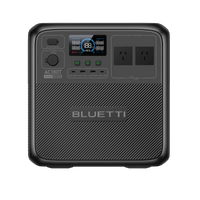












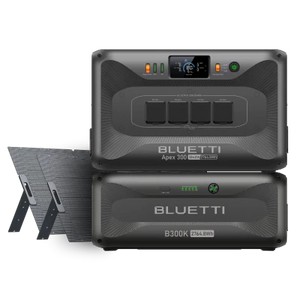





















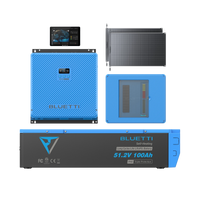





















![[Phased Out] BLUETTI B80P Expansion Battery | 806Wh](http://www.bluettipower.com.au/cdn/shop/files/202310025B80P_2000-2000px_4_4caa0c1c-4dab-4272-9e9b-2b7507e5bd81.jpg?v=1713777870&width=200)
![[Phased Out] BLUETTI B210P Expansion Battery | 2,150Wh](http://www.bluettipower.com.au/cdn/shop/files/2_08cf9ef3-03a4-4489-b641-d3edb8094896.webp?v=1716016566&width=200)
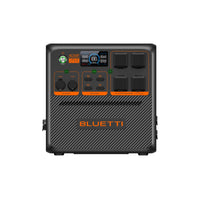


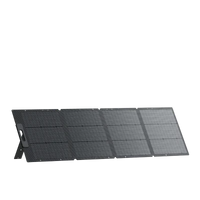


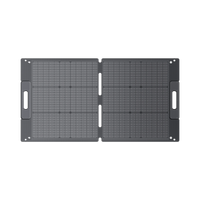





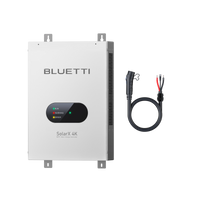






















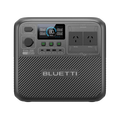

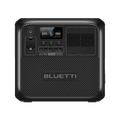






























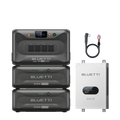



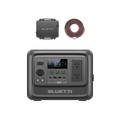





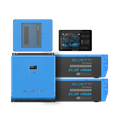



































![[Phased Out] BLUETTI B80P Expansion Battery | 806Wh](http://www.bluettipower.com.au/cdn/shop/files/202310025B80P_2000-2000px_4_4caa0c1c-4dab-4272-9e9b-2b7507e5bd81.jpg?v=1713777870&width=120)
![[Phased Out] BLUETTI B210P Expansion Battery | 2,150Wh](http://www.bluettipower.com.au/cdn/shop/files/2_08cf9ef3-03a4-4489-b641-d3edb8094896.webp?v=1716016566&width=120)


















